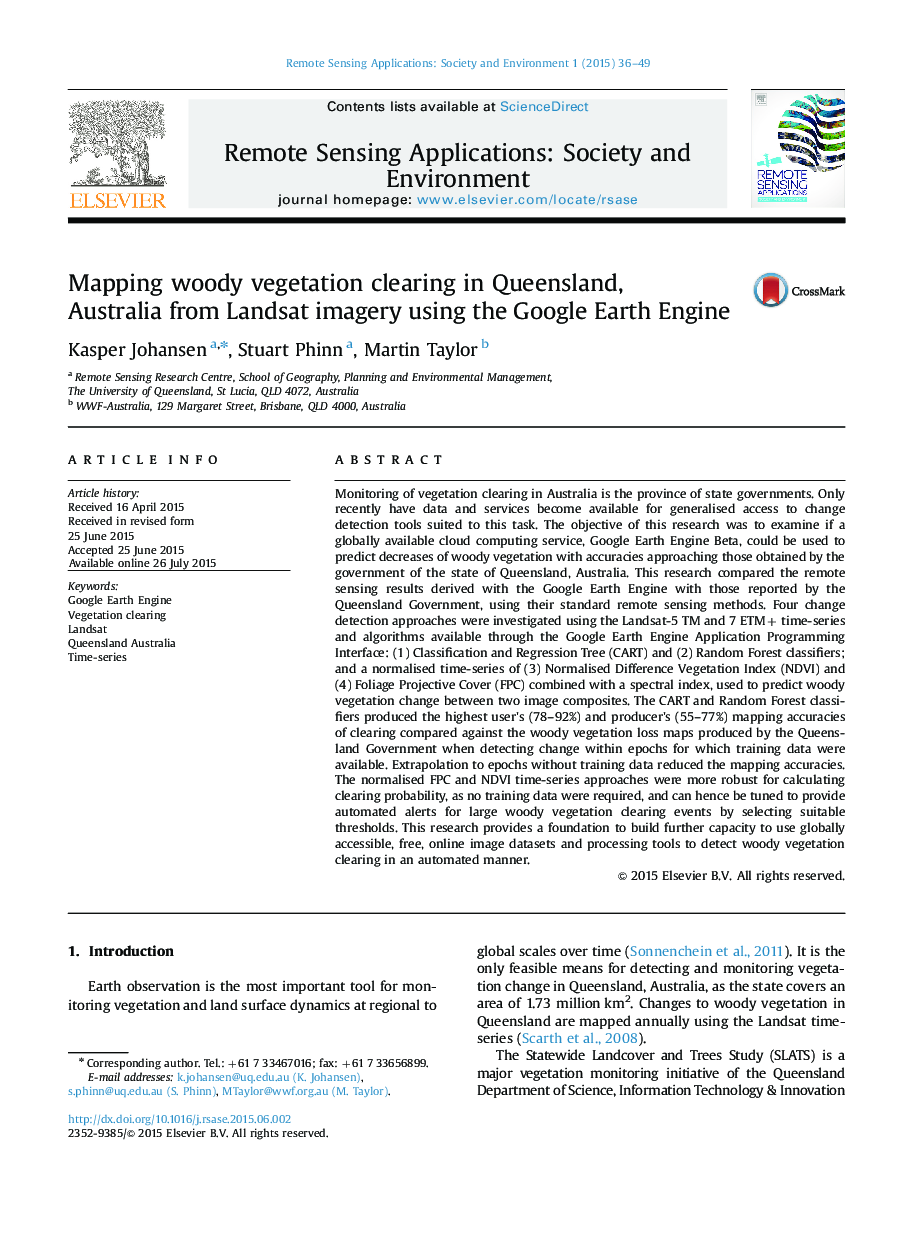| کد مقاله | کد نشریه | سال انتشار | مقاله انگلیسی | نسخه تمام متن |
|---|---|---|---|---|
| 4458782 | 1621006 | 2015 | 14 صفحه PDF | دانلود رایگان |

• The Google Earth Engine (GEE) can be used to map woody vegetation change.
• Time-series of Landsat data can be used to assess vegetation change in the GEE.
• The CART and Random Forest classifiers require high quality training data.
• Greening and drying of the landscape may affect the change detection results.
Monitoring of vegetation clearing in Australia is the province of state governments. Only recently have data and services become available for generalised access to change detection tools suited to this task. The objective of this research was to examine if a globally available cloud computing service, Google Earth Engine Beta, could be used to predict decreases of woody vegetation with accuracies approaching those obtained by the government of the state of Queensland, Australia. This research compared the remote sensing results derived with the Google Earth Engine with those reported by the Queensland Government, using their standard remote sensing methods. Four change detection approaches were investigated using the Landsat-5 TM and 7 ETM+ time-series and algorithms available through the Google Earth Engine Application Programming Interface: (1) Classification and Regression Tree (CART) and (2) Random Forest classifiers; and a normalised time-series of (3) Normalised Difference Vegetation Index (NDVI) and (4) Foliage Projective Cover (FPC) combined with a spectral index, used to predict woody vegetation change between two image composites. The CART and Random Forest classifiers produced the highest user's (78–92%) and producer's (55–77%) mapping accuracies of clearing compared against the woody vegetation loss maps produced by the Queensland Government when detecting change within epochs for which training data were available. Extrapolation to epochs without training data reduced the mapping accuracies. The normalised FPC and NDVI time-series approaches were more robust for calculating clearing probability, as no training data were required, and can hence be tuned to provide automated alerts for large woody vegetation clearing events by selecting suitable thresholds. This research provides a foundation to build further capacity to use globally accessible, free, online image datasets and processing tools to detect woody vegetation clearing in an automated manner.
Journal: Remote Sensing Applications: Society and Environment - Volume 1, July 2015, Pages 36–49